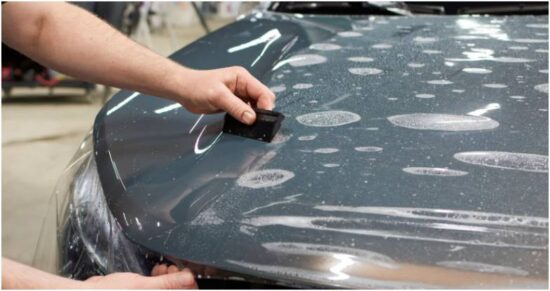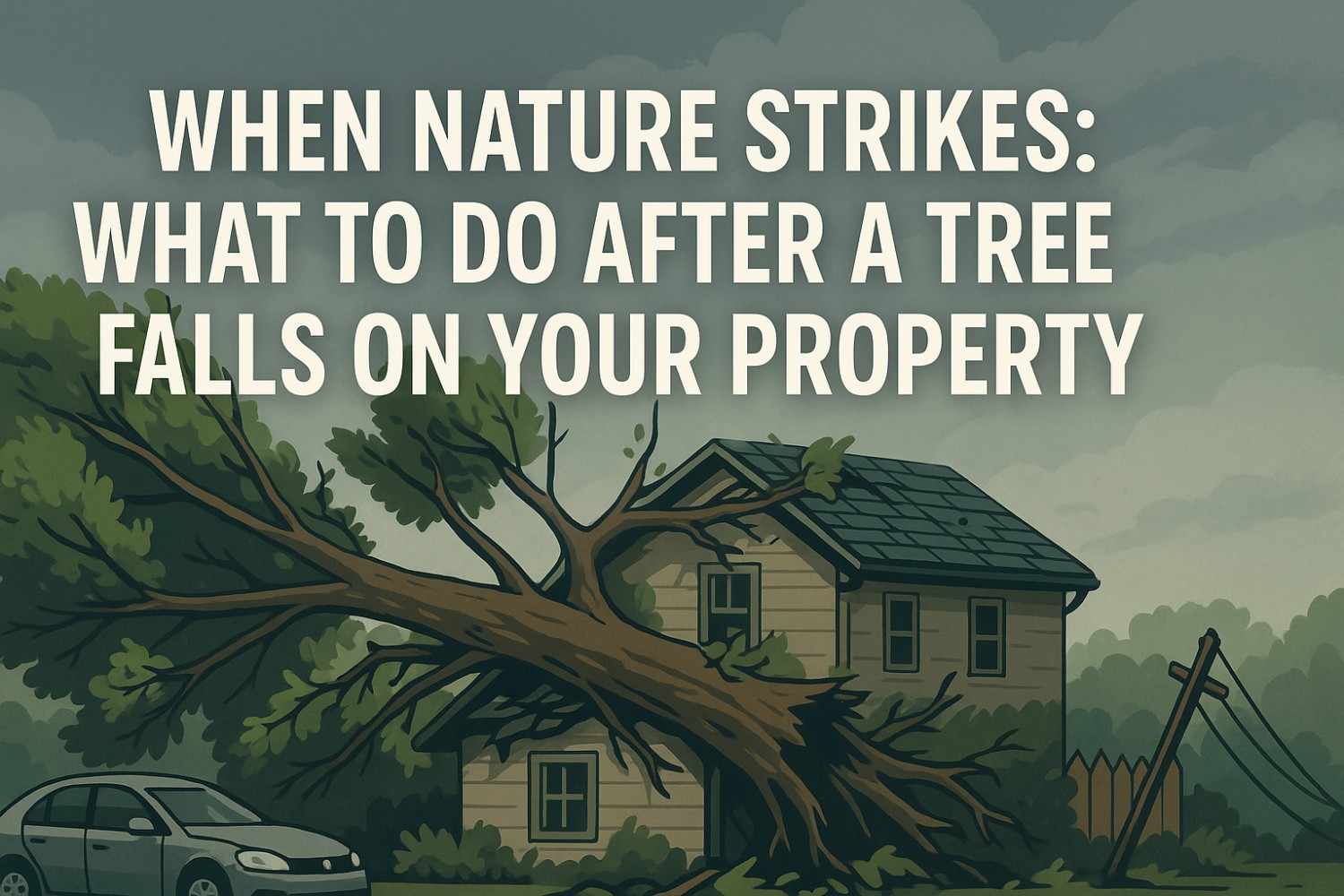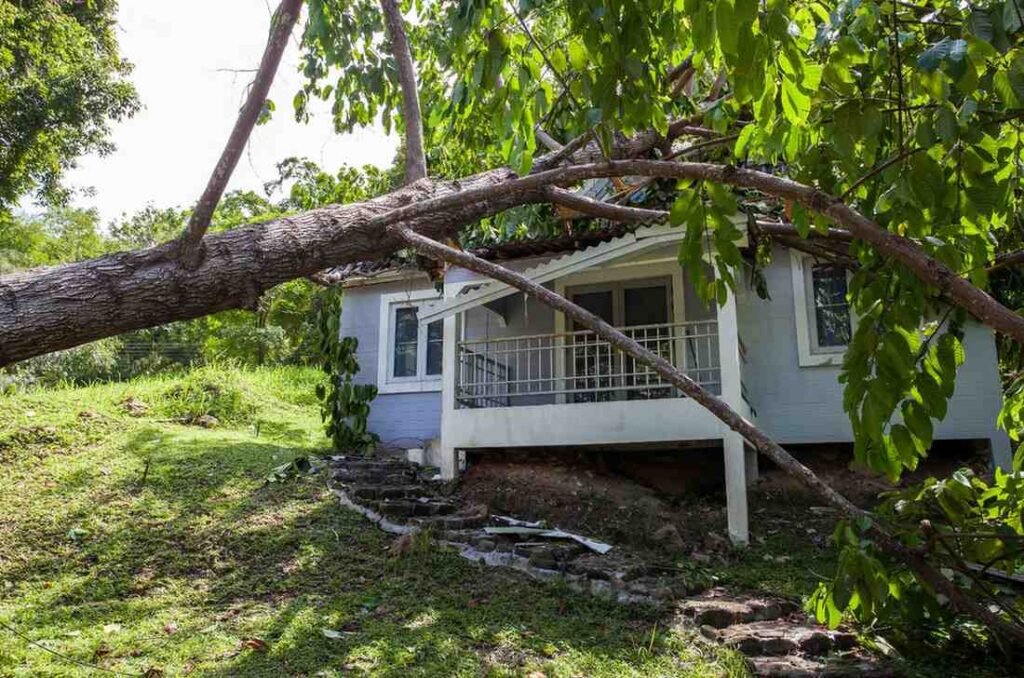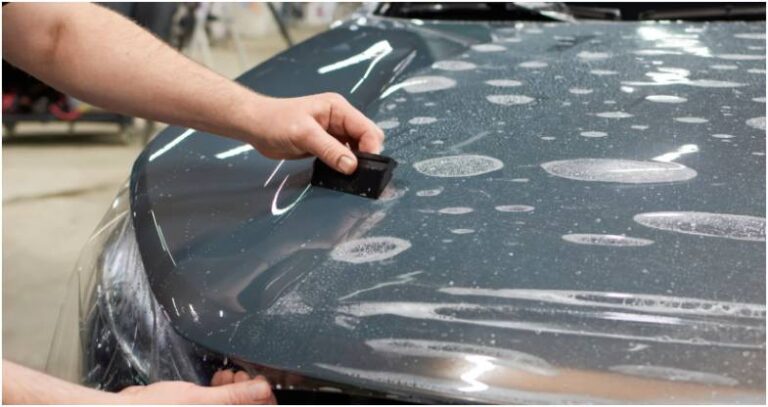Few things can stop you in your tracks like the sudden crash of a falling tree. One moment everything is calm, and the next, you’re dealing with damaged property, blocked driveways, downed power lines, or worse—risk to personal safety. Whether it’s caused by a storm, disease, or simple bad luck, fallen tree damage can be overwhelming. Knowing what to do in those first critical moments can protect your safety, speed up repairs, and improve your chances of a successful insurance claim.
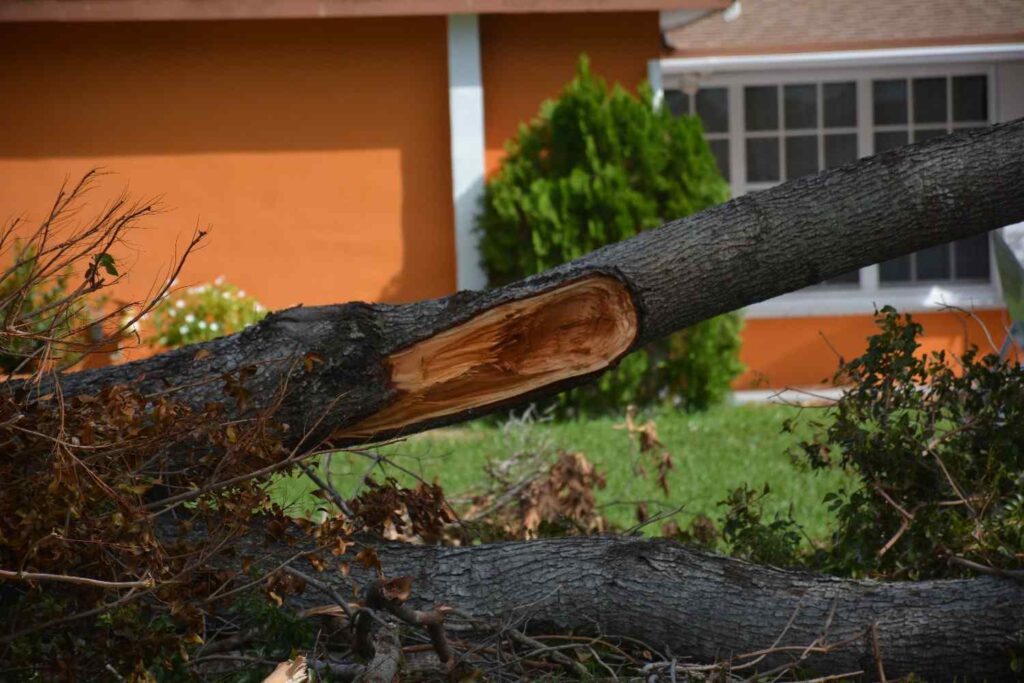
Here’s a step-by-step guide on what to do when nature strikes.
1. Prioritize Safety Above All Else
As tempting as it may be to inspect the damage immediately, take a moment to assess the scene from a safe distance. A fallen tree can bring hidden hazards, including:
- Downed electrical wires
- Cracking branches still under tension
- Unstable structures (roofs, fences, or sheds)
If you see power lines involved, stay away and call your utility provider right away. Never attempt to touch or move anything—electrical lines can be deadly even if they appear inactive.
If the tree fell during an ongoing storm, wait until the weather has passed before going outside. Safety first; damage assessment comes second.
2. Check for Structural Damage
Once the area is safe to enter, walk around your property and check for any damage to:
- Your roof and gutters
- Windows, doors, and exterior siding
- Decks, patios, or fences
- Vehicles, sheds, or other structures
Avoid climbing onto the roof or attempting to move large branches yourself. Fallen trees can weigh thousands of pounds, and even a slight shift can cause additional damage or put you at risk of injury. If the tree has affected your roof—or if you need professional help with repairs or roof installation in Salt Lake City—contact a qualified roofing contractor to handle the situation safely and correctly.
3. Document Everything
Before any cleanup begins, gather visual proof. Thorough documentation will make the insurance process smoother and ensure nothing is missed.
- Take clear photos from multiple angles.
- Capture close-up shots of the damage.
- Include wider shots to show the overall scene.
If possible, photograph the tree before anything moves or gets removed. This evidence will be crucial for insurance adjusters.
4. Contact Your Insurance Provider
Next, notify your homeowner’s insurance company. Ask about their specific process for fallen tree claims. Coverage can vary, but in most cases:
- If a tree from your property damages a structure (home, garage, etc.), your policy should cover it.
- If your tree falls on a neighbor’s property, their insurance typically covers their damage.
- If a neighbor’s tree falls onto your property, your insurance may still be responsible—unless there was documented neglect on your neighbor’s part.
Be prepared to provide photos, date and time of the incident, and any details about the event, such as storm conditions.
5. Don’t Remove the Tree Yourself
Even if you’re handy with tools, tree removal is not a DIY job. Large trees require specialized equipment and trained professionals. Attempting removal without proper expertise can lead to serious injury or further damage.
Your insurance company may recommend or approve certain contractors, so check first before scheduling work. If no recommendation is provided, look for a licensed and insured tree removal service—preferably one that offers emergency response.
6. Secure the Area (If Possible)
While you’re waiting for professionals, take small precautionary steps to minimize additional damage:
- Use tarps to cover exposed roof areas (if safe to do so).
- Block access to the affected zone to keep children and pets away.
- Move valuables from inside the damaged section of the home if you suspect leaks or structural compromise.
Only take actions that do not put you at risk—your safety takes priority.
7. Monitor for Hidden Damage
After the tree is removed, it’s easy to think the worst is behind you. However, some damage may appear slowly:
- Roof leaks may show up days later.
- Cracks in drywall or ceilings can surface as structural stress shifts.
- Gutters, drainage, or landscaping may need attention.
Make sure to thoroughly inspect the area and notify your insurance company if you discover new issues.
8. Take Preventive Steps for the Future
Once everything is resolved, use the experience as a motivator to reduce future risks:
- Have trees inspected by certified arborists annually.
- Remove weakened, diseased, or leaning trees near structures.
- Trim branches hanging over roofs or power lines.
- Keep yard drainage systems clear to prevent root weakening.
Tree maintenance may not prevent every accident, but it significantly reduces the chances of costly—and dangerous—situations.
Final Thoughts
A fallen tree can turn any day upside down. But with a clear plan—prioritizing safety, documenting damage, calling the right professionals, and coordinating with insurance—you can take control of a chaotic situation. The goal isn’t just cleanup; it’s restoring peace of mind.
Nature may strike without warning, but knowing what to do next puts the power back in your hands.



